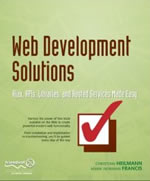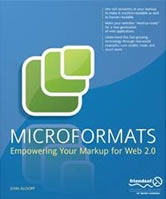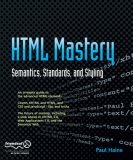★★★★☆ This is a book about design ideas. It has 10 chapters and 10 authors (all men, but who’s counting). The authors list includes Cameron Adams, Mark Boulton, Andy Clarke, Simon Collison, Jeff Croft, Derek Featherstone, Ian Lloyd, Ethan Marcotte, Dan Ruben and Rob Weychert. Andy Budd does the introductions.
The main sections of the book deal with layout, using print techniques on the web, and DOM scripting. The chapters are a series of case studies for everything from widgets to entire websites.
CSS is the topic in the chapter on semantic structure, a case study of the building of dirtyprettythings.com. This chapter includes a discussion of CSS styled tables and definition lists. Chapter two deals with CMS templates and how to use CSS, JavaScript and Flash to beat them into submission. Chapter three is a case study of the redesign of The New York Magazine website, which makes use of IDs in the body tag to create various templates within a CMS setup. Both the chapters detailing work on CMS driven sites include a number of hacks.
The case study in chapter four chronicles the CSS design process used on worrysome.net. In chapter five, you get several tips for the creative use of PNG transparency. An excellent chapter with new ideas I haven’t seen assembled elsewhere.
In chapters six and seven the book switches to the explanation of how to adapt grid systems and print typography from print to the Web. The typography chapter has some useful math help with sizing both fonts and layouts.
The final section gives you three chapters on using the DOM and JavaScript. One chapter deals with selectively printing only certain parts of a Web page. Another deals with creating dynamic interfaces, and the final chapter deals with accessible sliding navigation.
This isn’t a book to use to learn CSS or DOM scripting, but if you already understand these things, it’s a good book for picking up new ideas and for seeing how some designers work through a design process. There’s plenty useful CSS examples. As I mentioned, I don’t think I’ve seen so much useful PNG transparency information in a web design book before, which gives this book a definite plus.






